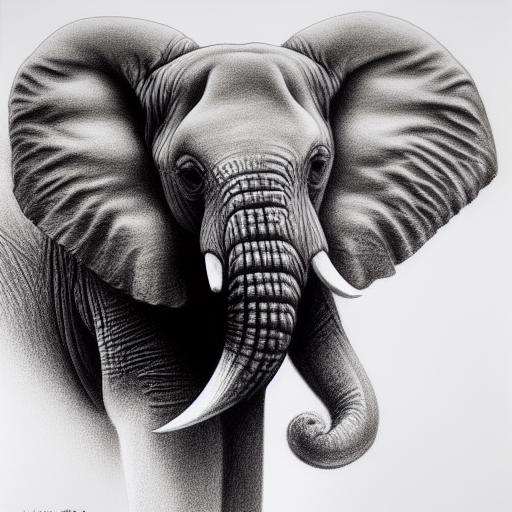What is charcoal art?
Charcoal art is a type of visual art that involves the use of charcoal sticks or powder to create drawings or paintings on paper or canvas. Charcoal is a versatile medium that allows artists to create a wide range of textures and tones, from delicate and soft lines to bold and dramatic strokes.
Charcoal has been used as a medium for creating art for centuries, and many famous artists have used it to create some of their most iconic works. Some of the advantages of using charcoal as a medium include its ability to capture a wide range of tonal values, its versatility in creating different types of textures and marks, and its ease of use and accessibility.
Range of tones and textures
The process of creating a charcoal artwork typically involves sketching out the basic shapes and lines with a charcoal stick or pencil. Artists then gradually build up layers of charcoal, blending and smudging the medium to create a range of tones and textures. Some artists may use additional tools, such as erasers or blending stumps, to further manipulate the charcoal.
Charcoal art is often used to create portraits, landscapes, and still-life compositions. It can be a challenging medium to work with, as it requires a certain level of skill and patience to achieve the desired effects. However, the results can be stunning, with charcoal artworks often showcasing a dynamic and expressive quality that is unique to the medium.
What is AI-generated art?
AI-generated art is a form of artwork that is created using algorithms of artificial intelligence. It offers several advantages over traditional art-making methods, including faster and more efficient image creation, the ability to experiment with diverse styles and techniques, and the capability to create designs that fit specific requirements. AI-generated art also promotes diversity and inclusivity within the art world by providing a platform for artists from different backgrounds to express their unique experiences and perspectives.
Designers can easily incorporate AI-generated art into their projects by using online tools such as Visual Paradigm Online. Additionally, artists can take advantage of websites like Stable Diffusion, Midjourney, and Dalle 2 to create their own AI-generated art and explore the endless creative possibilities that this technology offers.
How to create this prompt?
When writing an AI image prompt, it’s important to consider the specific details and characteristics that will influence the resulting image generated by the algorithm. In the prompt “black and white art drawing of an elephant, a pencil sketch by Roberto Parada, trending on behance, photorealism, half elephant, pencil painting, high detailed drawing,” each component plays a crucial role in determining the final image.
The first detail in the prompt specifies that the artwork should be a black and white drawing of an elephant. This limits the color palette available to the algorithm and guides it towards a monochromatic aesthetic. The use of black and white also creates a sense of contrast and depth, allowing for more nuanced shading and detail.
The second component of the prompt specifies that the artwork should be a pencil sketch by Roberto Parada, who is a well-known artist trending on Behance. This detail influences the style and technique used by the algorithm to create the image, as it is based on the artistic style of Parada. The algorithm will likely try to replicate Parada’s distinctive style, incorporating the use of soft, subtle lines and shading to capture the essence of the pencil sketch.
The prompt also specifies that the artwork should have a photorealistic quality, which means that it should resemble a real-life elephant as closely as possible. This detail will guide the algorithm towards using techniques that emphasize detail and realism, such as careful attention to texture and lighting. The resulting image will likely be highly detailed and realistic, with a focus on capturing the nuances of the elephant’s form and features.
Finally, the prompt specifies that the artwork should be a “pencil painting” and a “high detailed drawing,” which reinforces the focus on capturing the nuances of the elephant’s form and features. These details guide the algorithm towards using techniques that emphasize detail and precision, such as careful attention to line quality and shading.
Overall, the various components of the prompt work together to guide the algorithm towards creating a highly-detailed, photorealistic black and white drawing of an elephant, inspired by the artistic style of Roberto Parada.


